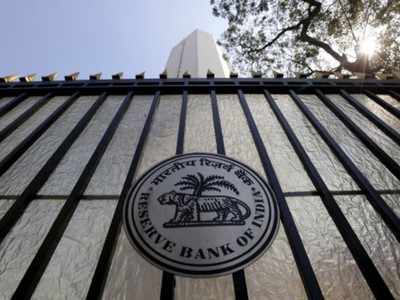
NEW DELHI: Companies in sectors such as retail and wholesale trade, textiles and engineering, which were repaying loans before the Covid crisis, can look forward to easier terms of repayment while NBFCs, power, steel and real estate businesses that were struggling even before the crisis may have to face the pain of recovery action.
The RBI said on Monday it has broadly accepted the recommendations of the five-member expert committee headed by K V Kamath.
The panel has identified 26 sectors impacted by the crisis and has prescribed six key ratios within which the resolution plan has to be finalised. For sectors not mentioned, the ratios can be decided by the individual bank. These ratios essentially determine how much debt a company can build up in relation to its capital and income. TNN
Checklist of 26 sectors has both pros & cons for banks
Time is of essence at the present juncture. Considering the large volume and the fact that only standard assets are eligible under the proposed scheme, a segmented approach of bucketing these accounts under mild, moderate and severe stress may ensure a quick turnaround. To complete this task, simplified restructuring for mild and moderate stress may be prescribed. Severe stress cases would require comprehensive restructuring,” the panel said.
For instance, all sectors must have a debt service coverage ratio equal to or more than 1. What this means is that the company has to generate operating income to cover its annual debt and interest payments after restructuring. Also, all banks are required to have a current ratio of at least 1. This means that the company’s debt due in a year or less are on a par with their assets. The only exception is aviation, where a ratio of 0.4 has been allowed, because airlines follow the cash and-carry model for revenue purpose, thereby creating almost nil debtors and higher current liabilities in form of advance received from customers. Also, airlines enjoy 6-9 months of credit from vendors.
The 26 sectors specified by the RBI include automobiles, power, tourism, cement, chemicals, logistic, mining, real estate, and shipping. The advantage of this checklist is that banks restructure loans of all companies that fulfill the conditions without fear of subsequent action by enforcement authorities if loans go bad. The flip side is that these fixed parameters could reduce the headroom for banks to restructure loans for some sectors using their judgment.
The RBI said on Monday it has broadly accepted the recommendations of the five-member expert committee headed by K V Kamath.
The panel has identified 26 sectors impacted by the crisis and has prescribed six key ratios within which the resolution plan has to be finalised. For sectors not mentioned, the ratios can be decided by the individual bank. These ratios essentially determine how much debt a company can build up in relation to its capital and income. TNN
Checklist of 26 sectors has both pros & cons for banks
Time is of essence at the present juncture. Considering the large volume and the fact that only standard assets are eligible under the proposed scheme, a segmented approach of bucketing these accounts under mild, moderate and severe stress may ensure a quick turnaround. To complete this task, simplified restructuring for mild and moderate stress may be prescribed. Severe stress cases would require comprehensive restructuring,” the panel said.
For instance, all sectors must have a debt service coverage ratio equal to or more than 1. What this means is that the company has to generate operating income to cover its annual debt and interest payments after restructuring. Also, all banks are required to have a current ratio of at least 1. This means that the company’s debt due in a year or less are on a par with their assets. The only exception is aviation, where a ratio of 0.4 has been allowed, because airlines follow the cash and-carry model for revenue purpose, thereby creating almost nil debtors and higher current liabilities in form of advance received from customers. Also, airlines enjoy 6-9 months of credit from vendors.
The 26 sectors specified by the RBI include automobiles, power, tourism, cement, chemicals, logistic, mining, real estate, and shipping. The advantage of this checklist is that banks restructure loans of all companies that fulfill the conditions without fear of subsequent action by enforcement authorities if loans go bad. The flip side is that these fixed parameters could reduce the headroom for banks to restructure loans for some sectors using their judgment.
Download
The Times of India News App for Latest Business News
more from times of india business
Quick Links
ELSS Mutual Funds BenefitsIncome Tax Refund statusWhat is AssochamITR Filing Last DateHome Loan EMI TipsHome Loan Repayment TipsPradhan Mantri Awas YojanaTop UP Loan FeaturesIncrease Home Loan EligibilityHome Loan on PFTax Saving Fixed DepositLink Aadhaar with ITRAtal Pension YojanaNita AmbaniIndian EconomyRBIAadhaar CardSBIReliance CommunicationsMukesh AmbaniIndian Bank Ifsc codeIDBI Ifsc codeIndusind ifsc codeYes Bank Ifsc CodeVijay Bank Ifsc codeSyndicate bank Ifsc CodePNB Ifsc codeOBC Ifsc codeKarur vysya bank ifscIOB Ifsc codeICICI Ifsc codeHDFC Bank ifsc codeCanara Bank Ifsc codeBank of baroda ifscBank of America IFSC CodeBOM IFSC CodeAndhra Bank IFSC CodeAxis Bank Ifsc CodeSBI IFSC CodeGST
Get the app








